
Les Edwards is an artist who needs very little introduction. Having won multiple awards for his artwork, which spans four decades of genre book covers and posters, he is definitely at the top of his profession.
Paul Kane: At what age did you first get into painting and drawing?
Les Edwards: I can’t remember a time when I didn’t draw. It was my main method of expression from a very early age. My father used to go to work very early in the morning and sleep in the afternoon. Drawing is a very quiet activity, except when I’m doing sound effects, so maybe it was encouraged for that reason.
Paul Kane: Is it true you were once told you’d never be an illustrator?
Les Edwards: Quite true. When I was at Art School the general attitude of the tutors was that illustration was much too difficult to make a carreer of it. It’s not quite as bad as it sounds because they said this to almost everyone and the ideal, for them, was a job in a nice graphics studio doing paste-up work. The trouble was that I knew this would drive me crazy. The more I gravitated to making pictures the more they discouraged me. I found out towards the end of the course that the Head of Department was a failed illustrator, and his attitude, and that of his wife, who also taught there, permeated the whole of the department. In a sense they were right. Few people manage to make a carreer in illustration and I’ve had a huge amount of luck but it might have been nice to have a little encouragement.
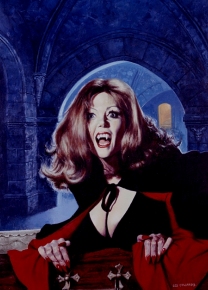
Paul Kane: Did you admire any artists growing up? Are there any that inspire your work
today?
Les Edwards: When I was young I loved Frank Bellamy’s strip ‘Heros the Spartan’, which appeared in the Eagle comic, along with the celebrated Dan Dare. ‘Heros’ had many elements of fantasy and horror so I was naturally drawn to it, and Bellamy is the first artist I can remember trying to emulate. Later I fell in love with the work of Bruce Pennington who was ubiquitous in book jacket illustration if you were at all interested in SF or Fantasy. I’ve been looking at his work again recently and it still moves me in just the same way and more than some, shall we say, more technically proficient artists.
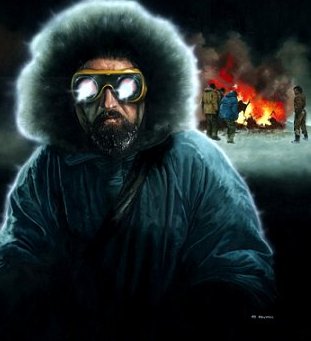
Paul Kane: How did you get into painting film posters - like The Thing and Nightbreed?
Les Edwards: The Nightbreed poster was just a result of Clive Barker steering the job my way. I was in the middle of painting Son of Celluloid at the time but Clive knew I would love doing the poster so he suggested me for the job…Also, he hated the US poster and was determined to have something for the UK which was more in keeping with the real feel of the movie. The other movie posters came about in the usual way, through my agent. Film posters were often painted then so it wasn’t terribly unusual. Now, of course, you almost never see a painted poster, which is a shame.
Paul Kane: How did the Barker graphic novels come about and were you a fan of his work?
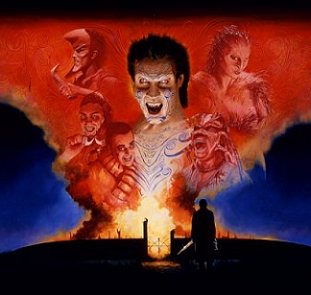
Les Edwards: I’d read The Books of Blood and The Damnation Game and I was a big fan. Then Hellraiser blew me away. When the collection of my work, Blood and Iron was published I wanted Clive to do an introduction. The publishers just rolled their eyes and more or less said “forget it”. However, Clive was at the World Fantasy Convention in London and we (I should say Val, my wife) approached Clive about it doing something and he was very enthusiastic. As it turned out Clive couldn’t do it largely because of filming Nightbreed, so Kim Newman wrote a splendid intro instead. I didn’t know Kim at the time but I’ve come to like and respect him greatly. I assumed that was the end of any association with Clive but as it turned out he remembered me and suggested to Eclipse Books that I’d be right for the Son of Celluloid job. I’d never done a comic strip before but everyone was pleased with the result and so Rawhead Rex was the next logical step.
Paul Kane: What was it like collaborating with him?
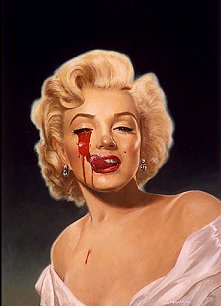
Les Edwards: I’d like to tell you something controversial but the truth is that Clive is an extremely cool guy and is very happy for people to take his work and interpret it. He was never anything but encouraging. There really wasn’t much in the way of collaboration because he was very “hands off” in his approach. He was perfectly happy for me to run with it and I was lucky to have such a good adaptation by Steve Niles who did the really hard work of turning the story into a form suitable for the graphic novel format.
Paul Kane: How did the Edward Miller pseudonym come about?
Les Edwards: Although I’d always tried to do a wide range of work I’d become well known for painting Horror and was very happy with that, but as that genre began to decline I found it increasingly difficult to get work because most publishers just saw me as “that guy that does Horror”. My agents and I cooked up Edward Miller as a way of bypassing this problem. The idea was that Ed’s work would be quite different and there would be no “Les Edwards baggage”. I was quite sceptical but people seemed to take to the new stuff straight away. Then, when I left my agent, we had to come clean to clients and Ed’s secret was revealed to an astonished World (laughs).
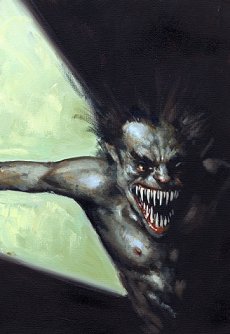
Paul Kane: What draws you to depicting the darker side of things?
Les Edwards: I wish I knew. All I can tell you is that one of my earliest memories is of my Mother reading to me from the Noddy stories. My favourite character, even then, was Sly the Goblin. Sly didn’t do much apart from jumping out at people and going “Boo!” but I would roar with laughter and couldn’t get enough of him. My Big Boy’s Book of Psychology would probably say that I’ve been trying to go “Boo!” ever since.
Paul Kane: Did you have an interest in horror growing up - film, literature or
otherwise?
Les Edwards: I was always interested in anything strange or bizarre whatever form it took. It’s hard to believe now but when I was young Fantasy and Horror were hard to come by so you really had to search it out, and that might have been part of the attraction. The “Fantasy Industry” as we know it now simply did not exist. Then I met a boy called Billy Herterich who had a collection of Famous Monsters magazines and you can imagine the rest. I wonder where he is now.
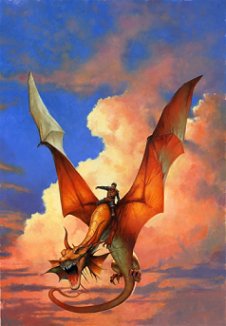
Paul Kane: Which genre do you enjoy working in the most: horror, sci-fi or fantasy?
Les Edwards: I always say that Horror is my spiritual home but the truth is that the genre is not as important as the act of painting. I’m certainly a genre fan but my overwhelming interest is in the frustrating pursuit of trying to learn about the process of painting and getting better at it.
Paul Kane: How do you feel when people tell you they get a chill from seeing one of
your paintings?
Les Edwards: It’s very pleasing, of course and I’m genuinely flattered. Unfortunately I do have the very English habit of disparaging myself which other nationalities don’t necessarily appreciate. Like a lot of English people I find praise a bit embarrasing, but that doesn’t mean I want it to stop.
Paul Kane: What’s your working method for approaching a piece like the cover of Mick Garris’ Development Hell? Do you focus on a specific image from the story, do you work in tandem with the writer or and does the publisher have last say?
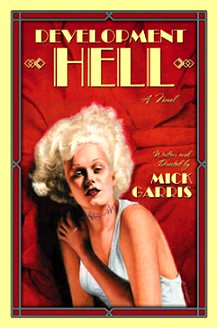
Les Edwards: Ideally I would like to read the story and try to get an idea that way. Unfortunately that’s increasingly uncommon with large publishers as they tend to have a very precise idea of what they want on a cover. It’s decided in committee and I usually just get a rather narrow brief. They most definitely have the final say. The author might be consulted. Independent publishers like PS are much more open to accepting my interpretation which is one of the reasons I’m so pleased to be working more in this area. It’s odd that you mention the Mick Garris book because that is another example of Clive Barker steering work my way.
Paul Kane: Has anything you’ve painted ever scared you?
Les Edwards: Not me I’m well ‘ard.
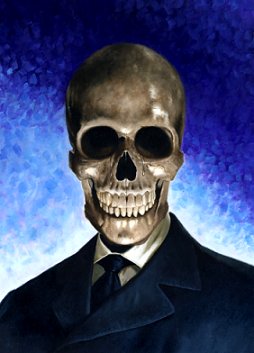
All artwork © Les Edwards/Edward Miller. Please visit the newly revamped http://www.lesedwards.com/ and http://www.edwardmiller.co.uk/ sites for more pictures and information.
© Les Edwards and Paul Kane 2008